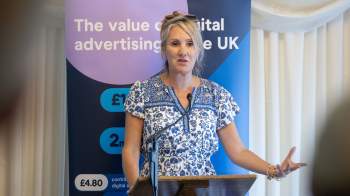Online Safety Bill introduced to Parliament
Posted on Friday 18 March 2022 | IAB UK
As the Online Safety Bill is introduced to Parliament, we take a look at what’s changed and what it means for digital advertising
What do we know?
There have been several notable changes to the Online Safety Bill (OSB) since it was published in draft form in 2021, regarding the duties placed on online platforms to tackle fraudulent advertising. DCMS has introduced a new standalone duty into the OSB requiring ‘Category 1 and 2A’ services (see below) to take action to minimise the likelihood of fraudulent adverts being published on their service. Fraudulent advertising is defined as: Paid-for; amounts to an offence (defined in relation to other legislation - Financial Services and Markets Act 2000, Fraud Act 2006, Financial Services Act 2012, Serious Crime Act 2007); and is not regulated user-to-user content.
Ofcom will be the regulator for the provisions in the OSB, and specific steps to address fraudulent advertising will be set out in its codes of practice, but they will “likely” include conducting additional checks on advertisers, sharing information on known fraudulent advertisers, and removing fraudulent adverts when reported by users.
Who does this impact?
This part of the Bill applies to category 1 and category 2A services. A category 1 service is defined as the highest-risk, highest-reach “regulated user-to-user services” i.e. the largest social media services. Category 2A services are defined as highest-risk, highest-reach “regulated search services”, such as the largest search engines. The services in scope do not need to be based in the UK to fall under the regulation of the Bill.
Will the Bill change again?
The Bill is a large, complex and contentious piece of legislation, and a large number of amendments are expected to be made as it travels through Parliament, so various changes could be made. The Bill also includes powers for the Secretary of State to amend section 36 (where the definitions of what constitutes a fraud offence are laid out). Offences may be added to the list in section 36 because of the prevalence of paid-for advertisements that amount to an offence, “the risk of harm to individuals in the United Kingdom presented by such advertisements, and the severity of that harm”.
What does the IAB think?
We agree that addressing scam advertising online is hugely important, but we do not think that adding scam ads into the remit of the OSB is the most effective way to do this, given that they are also included in the remit of the Online Advertising Programme (OAP) - which is open to proper industry consultation, unlike the addition of scam ads to the OSB.
As our CEO Jon Mew said last week: “The decision to duplicate the focus on scam ads across both programmes creates unnecessary regulatory fragmentation and risks constraining proper policy development… We are also concerned that the widened scope of the OSB has not been subject to industry consultation and that it could have unintended consequences for legitimate advertisers - particularly small businesses - if it is applied across the board. [This approach] seems at odds with the principles set out in the Government’s Plan for Digital Regulation, which emphasises the importance of drawing on industry expertise to develop effective regulation, and of a coherent and streamlined regulatory landscape.“ Read his full comment here.
Related content
IAB UK manifesto for growth in digital advertising
Learn moreCAP issues updated LHF guidance for consultation
Learn moreGovernment confirms brand ads exemption in LHF ad ban
Learn moreIAB UK responds to ICO call for views on regulatory approach to low-risk advertising
Learn more
Fast forward to 2030 with Futurescape
An in-depth exploration of the attitudes, innovations and media shifts that will shape the years ahead and redefine how we advertise by the turn of the decade



